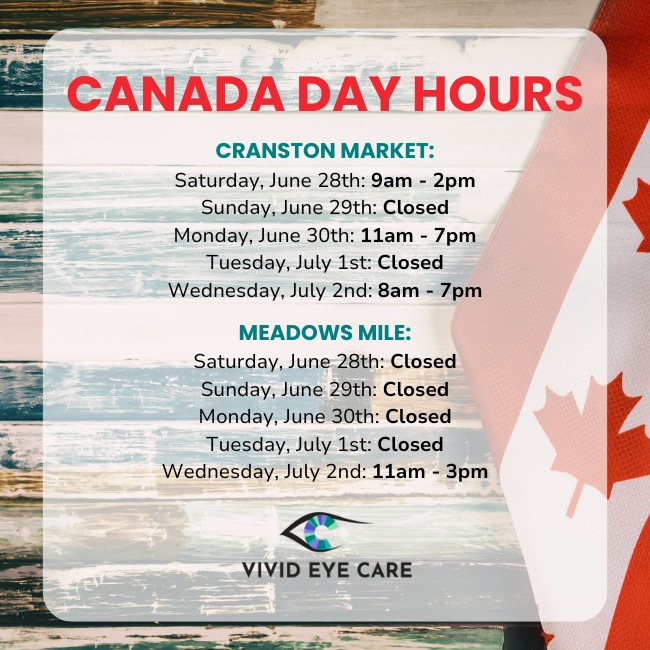Glasses and conventional contact lenses help many people see during their daily lives but aren’t always the right fit for everyone. While LASIK and PRK surgery provide a permanent solution to refractive errors, not everyone is interested in or able to undergo eye surgery. There is a unique alternative available!
Orthokeratology (ortho-k) lens technology allows you to temporarily correct your vision while sleeping, eliminating the need for glasses or contacts during the day.
Ortho-k lenses are great for individuals who live active lifestyles, don’t like wearing corrective lenses, or for children undergoing myopia management.
What are Ortho-K Lenses?
Orthokeratology (ortho-k) lenses are specially designed, hard gas-permeable contact lenses that are fitted to gently reshape the cornea and correct vision while sleeping.
For most patients, vision correction lasts all day eliminating the need for glasses or contact lenses to see. Others with high prescriptions may notice that the effects of ortho-k reshaping will slowly wear off during the day.
Some patients experience eye sensitivity when they first wear their ortho-k lenses due to adjusting to the rigid style of contact lenses. It does take a few days to adjust to this new sensation but should go away after a few days and is less noticeable at night when the lenses are in.
The results with ortho-k lenses take time. It can take a few days or even weeks to wake up with clear vision. Be consistent with nightly wear!
How Do Ortho-K Lenses Work?
Ortho-k lenses work by reshaping the cornea. The cornea is a clear, round structure that covers the pupil and iris. It’s responsible for bending light as it enters the eye before focusing on the retina, which helps us see.
Ortho-k lenses reshape the cornea by flattening the center of the cornea. This changes how light is bent as it enters the eye. When the cornea is reshaped, refractive errors like myopia, hyperopia, and astigmatism are corrected, resulting in clear vision.
These hard lenses are worn overnight to reshape the cornea. They allow for oxygen to permeate the eye so that the eye stays healthy and moisturized. When the lenses are removed in the morning the cornea stays flattened, correcting the need for glasses or contacts.
It helps to think of ortho-k lenses like dental retainers. Not wearing your retainer for a few days will result in your teeth slowly shifting back to their position before braces. Similarly, not wearing your ortho-k lenses for a few nights will cause your eyes to revert to their original shape, and the refractive error will return.
Who Can Benefit From Ortho-K Lenses?
Ortho-k is mainly used to correct myopia however, individuals with hyperopia, presbyopia, and astigmatism may benefit from vision correction with ortho-k lenses.
Ortho-k provides a noninvasive and temporary alternative to LASIK and PRK surgery. While the effects of ortho-k are reversible when the lenses aren’t worn correctly every night, they provide relief from glasses and contacts during day-to-day living.
Unfortunately, not everyone is a good candidate for ortho-k lenses. Factors like corneal curvature and prescription strength influence a patient’s candidacy. Ortho-k lenses are not recommended for Individuals with eye diseases or ocular health concerns like:
- Glaucoma
- Cataracts
- Keratoconus
- Large pupils
Individuals who make great candidates for ortho-k lenses include:
- Individuals who live an active lifestyle
- Patients with dry eyes
- Individuals who aren’t quite ready for LASIK or PRK surgery
- Children with myopia

Ortho-k For Myopia Management
“Myopia management or myopia control” describes treatments that aim to slow the progression of myopia. These treatments include specialized glasses lenses, specialized soft contact lenses, atropine drops, and ortho-k lenses. Ortho-k lenses are safe for children.
Myopia control is important as it aims to slow down the progression of myopia in children. As myopia increases, there may come a time when a child’s nearby vision is also blurry. Having high myopia can put individuals at risk for ocular diseases and concerns.
Optometrists can determine a child’s rate of myopia progression by tracking its progression during routine eye exams. Children are advised to visit their optometrist annually for routine exams however, some doctors may prefer to keep children on a 6-month check-in if they’re tracking the rate of myopia progression.
Vivid Eye Care has advanced diagnostic equipment to measure eye length to 0.01mm to diagnose myopia earlier than possible. This is why taking your child to regularly scheduled eye exams is important—we can detect the risk of myopia before their vision starts getting blurry.
Ortho-k lenses work to slow the progression of myopia. Ortho-K lenses reshape the cornea so that light entering the cornea can focus on the retina. Studies show that myopia growth can be slowed when light is focused in front of the peripheral retina. Bringing light that enters the cornea into focus in front of the retina acts like a stop signal for eye growth.
Schedule a Visit in South Calgary
Ortho-k lenses are a safe and temporary solution to refractive errors and a great way to manage myopia progression in children.
If you are considering ortho-k for yourself or your children, schedule an appointment with one of our experienced optometrists at Vivid Eye Care. We can answer any questions you may have and help you decide if ortho-k is the right choice.






















